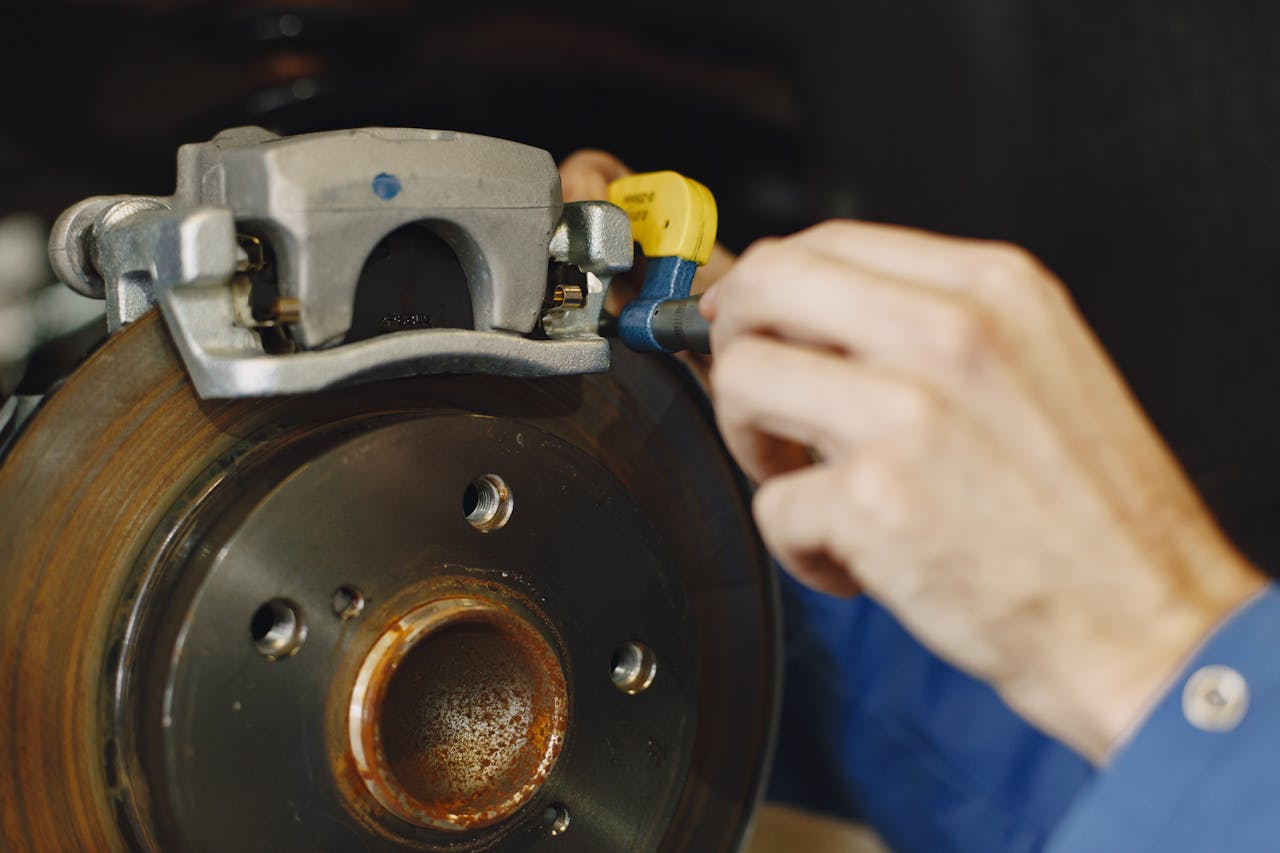Brake pads play a pivotal role in ensuring the safety and performance of your vehicle. Addressing brake pad wear is not just a matter of maintenance; it’s a critical aspect of responsible car ownership. In this comprehensive guide, we’ll explore the causes of brake pad wear, signs of worn brake pads, and the steps you can take to address this issue, keeping your car and passengers safe on the road.
Understanding Brake Pad Wear
The Importance
Brake pads are essential components of your car’s braking system. They create the necessary friction to slow down and stop your vehicle. As a result, they undergo significant wear and tear over time, and addressing this wear is crucial for maintaining optimal braking performance.
The Causes
- Friction and Heat: The primary cause of brake pad wear is the friction generated between the pads and the brake rotors. This friction produces heat, leading to gradual pad deterioration.
- Driving Habits: Aggressive driving, frequent abrupt stops, and constant heavy braking can accelerate brake pad wear.
- Quality of Brake Pads: The quality of the pads themselves influences their lifespan. Higher-quality pads typically last longer and provide better performance.
- Environmental Factors: Driving in hilly areas, where frequent braking is necessary, or in stop-and-go traffic conditions, can contribute to faster brake pad wear.
Signs of Worn Brake Pads
Recognizing the signs of worn brake pads is crucial for addressing the issue promptly. Here are some common indicators:
- Squeaking or Squealing Noises: High-pitched noises while braking are often a sign that the pads have reached a point of wear where they need attention.
- Reduced Braking Performance: If you notice a longer stopping distance or a decrease in braking responsiveness, it could indicate worn pads.
- Vibrations or Pulsations: Uneven brake pad wear can lead to vibrations or pulsations felt through the brake pedal, indicating a potential issue.
- Visible Inspection: If you can visually inspect your brake pads, a thickness of 3mm or less generally indicates the need for replacement.
Addressing Brake Pad Wear: A Step-by-Step Guide

Step 1: Diagnose the Issue
If you notice any of the signs mentioned, it’s essential to diagnose the problem. Inspect the brake pads visually if possible, or seek professional assistance.
Step 2: Measure Brake Pad Thickness
Use a brake pad thickness gauge to measure the thickness of the pads. Manufacturers often provide a minimum thickness specification; if the pads are below this limit, replacement is necessary.
Step 3: Check for Rotor Damage
Inspect the brake rotors for signs of damage, scoring, or warping. Damaged rotors can contribute to uneven pad wear.
Step 4: Replace Worn Brake Pads
If the brake pads are significantly worn, it’s time for replacement. Follow your car’s manual or seek professional help for the correct replacement procedure.
Step 5: Consider Brake Rotor Resurfacing or Replacement
If the rotors show signs of damage, resurfacing or replacement may be necessary to ensure smooth braking performance.
Preventing Future Brake Pad Wear

1. Smooth Driving Habits:
- Avoid aggressive driving and abrupt stops to reduce unnecessary strain on the brake pads.
2. Quality Brake Pads:
- Invest in high-quality brake pads for better durability and performance.
3. Regular Inspections:
- Conduct regular visual inspections of your brake pads and rotors to catch issues early.
4. Proper Brake System Maintenance:
- Follow your car’s maintenance schedule for brake system checks and fluid replacement.
Conclusion
Addressing brake pad wear is a crucial aspect of vehicle maintenance that directly impacts safety and performance. By understanding the causes, recognizing signs of wear, and taking prompt action, you can ensure your brakes operate at their best. Regular inspections and responsible driving habits will contribute to a safer driving experience for you and your passengers.
FAQs
How often should I replace my brake pads?
Brake pad replacement intervals vary, but a common guideline is every 25,000 to 70,000 miles. Refer to your car’s manual for specific recommendations.
Can I replace the brake pads myself?
If you have mechanical skills and the necessary tools, replacing brake pads is a DIY-friendly task. However, if you’re unsure, it’s advisable to seek professional assistance.
Are there different types of brake pads?
Yes, there are various types of brake pads, including ceramic, semi-metallic, and organic. Each type has its advantages, so choose based on your driving needs and preferences.
Can I resurface my brake rotors at home?
While it’s possible, resurfacing brake rotors is a precision task best performed by professionals to ensure optimal results.
What should I do if my brakes feel spongy after pad replacement?
Spongy brakes may indicate air in the brake lines or a brake fluid issue. Bleeding the brake system is a common solution, but if the issue persists, seek professional assistance.
Last Updated on February 29, 2024 by admin

Mac is an Automotive enthusiast. He owns up to 15 vehicles. He deals with Auto problems and shows his skill to Car owners who are seeking any type of Car help.





